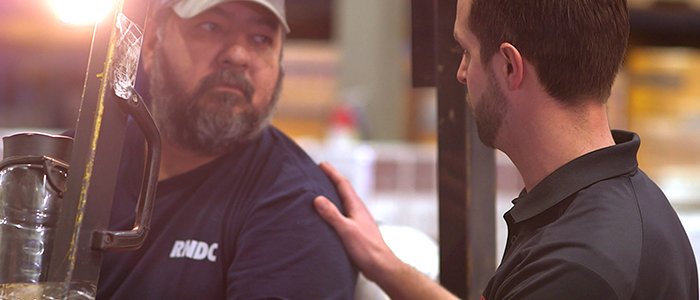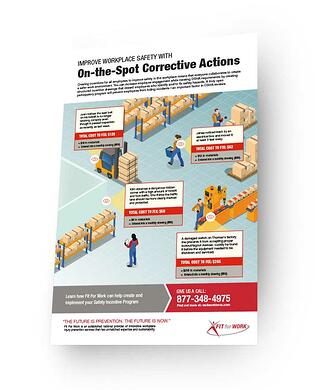Despite the proven impact ergonomics can have in the workplace, there are still many skeptics and misconceptions as to what ergonomics is and how it can provide value for your organization and your employees.
Here is a closer look at some of the most common misconceptions about ergonomics and the truth behind each one.
Ergonomics is a need – not a want
Many perceive ergonomics as an unnecessary luxury businesses only leverage when they have surplus funds or resources to help them do so. The reality is ergonomics is an absolute business necessity designed to help any systems-based organization operate more effectively.
It’s not enough to invest in ergonomics only when you have additional money to spend or when you feel you finally have time to devote to a safety program. If your organization is a systems-based operation not utilizing ergonomics, you’re doing so at the expense of your employees’ safety, productivity, and success.
Ergonomics puts systems and processes in place to help every employee succeed in their role. If you’re waiting for the perfect moment to consider investing in ergonomics, you’re missing out on the very opportunity that could provide the ROI you’re looking for in the first place.
Ergonomics is a multidisciplinary science – not pseudoscience
Another common misconception is that ergonomics is an illegitimate form of pseudoscience.
Ergonomics is a profession that applies theory, principles, data, and methods to design in order to optimize human well-being and overall system performance. Certified Professional Ergonomists (CPEs) undergo extensive coursework and training in order to attain the necessary credentials before putting them to work across dozens of industries.
Many other professionals such as engineers, athletic trainers (ATs), physical therapists (PTs), occupational therapists (PTs), industrial/organizational psychologists, industrial hygienists (IHs), and occupational health nurses (OHNs), among others are also part of the multidisciplinary teams working in the field of ergonomics.
Ergonomics is a multidisciplinary science in that it is comprised of elements from psychology, engineering, allied healthcare, and more. While it’s often thought to only relate to posture (i.e. sitting up straight, not straining your neck or shoulders, etc.), this is only a small piece of the equation . Ergonomics can generally be divided into three subcategories: cognitive (mental processes), physical (the effect of work on the body), and organizational (official policies and processes), all of which work together to create the most optimal working environment for employees.
Ergonomics is human-centric – not technology centric
When faced with musculoskeletal injuries and all of their related challenges, many employers today consider turning to technology like wearables to serve as the primary solution. In many cases, investing in technology as the sole solution results in a high-cost, low-impact strategy with minimal change in productivity and an increase in discomfort and fatigue. Although wearables can do a great job of providing data, they do not consider the complex human interactions that are necessary to get a complete picture of the human operator and the potential issues/risks they are facing in their work environment.
Ergonomics at its core is a human-centric approach , driven to increase performance and employee morale while reducing injuries in the process. Rather than electing to invest in technology, proper ergonomics focuses on the humans themselves , implementing systems and processes designed to optimize the working environment.
A human-centric approach to ergonomics lends itself to a decrease in injuries, improved worker well-being, reduced turnover, and increased ROI.
Ergonomics is cost-effective (when done properly) – not a waste of money
Tying back to the consideration of ergonomics as a need rather than a want, organizations that view ergo as a waste of money fail to see the proven ROI it can deliver across the workforce. When properly analyzed, designed, developed, implemented, and evaluated, ergonomics can serve as a highly cost-effective strategy for your business.
Consider the case of Plant 4 of Nexeteer Automotive , which used a simple ergonomic-based tool to save $24,000 a year. When manual performance of a task was resulting in employees hitting their hands with screwdrivers and hammers, shoulder and elbow injuries became a mounting issue. The solution was a tool that kept workers’ hands away from the strike point, leading to an easier, safer, and more efficient process.
At the end of the day, a $150 tool led to a savings of $24,000 per year. That’s the power of ergonomics.
Ergonomics is applicable to all industries – not just office settings
When people think of ergonomics, many immediately envision adjustable desk heights and chairs with proper lumbar support, but the science of ergo is much more widely applicable than that.
According to the CDC, the goal of ergonomics is to reduce stress and eliminate injuries and disorders associated with the overuse of muscles, bad posture, and repeated tasks. In reality, ergonomics can help reduce MSDs, accidents, and injuries in just about any job where:
- Physical force is exerted
- Actions are repeated
- Postures are awkward and/or static
- The body operates in a confined space
- Contact with tools or surfaces causes vibration or stress
As you can see, ergo is widely applicable beyond the office setting and has had a proven impact on every industry from manufacturing and food service to warehousing and aerospace.
Create a better environment for your employees with Fit For Work
Fit For Work is the only organization with a Professional Ergonomics department that seamlessly integrates with onsite Early Intervention. Together, the areas of predictive analytics, pain science, and ergo work together to have a game-changing impact on the future of your organization and your employees.
Contact us today to learn more about implementing a turnkey safety program to bolster the safety, morale, and productivity of your workforce.





